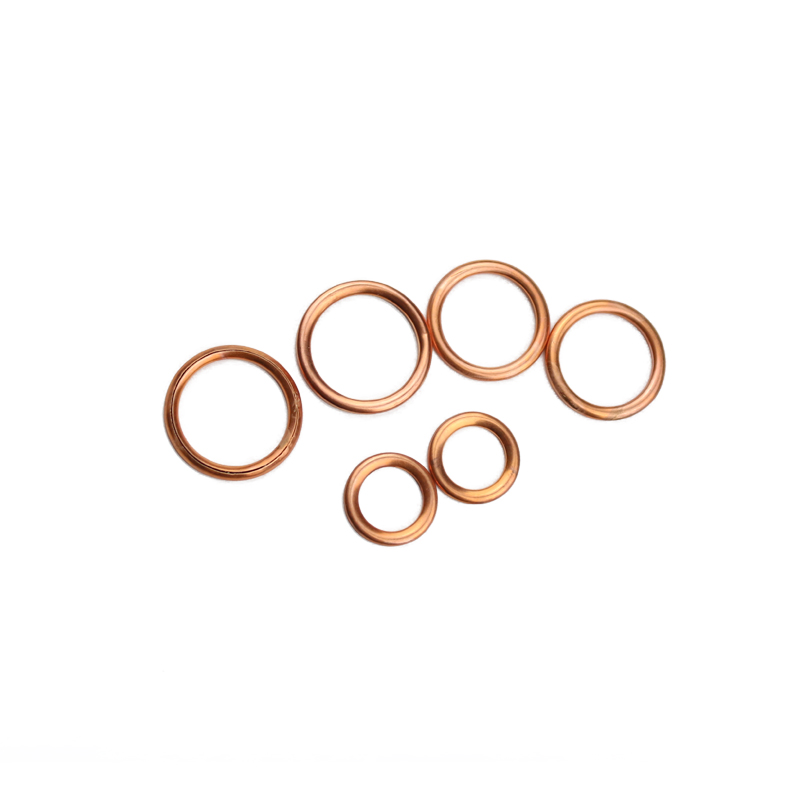Replacement Tips for Steering Rack Oil Seal Maintenance and Installation
Understanding Steering Rack Oil Seals Importance and Maintenance
The steering system of a vehicle is crucial for ensuring safe and responsive handling. At the heart of this system lies the steering rack, which translates the rotational movement of the steering wheel into lateral movement of the wheels. To ensure the smooth operation of the steering rack, oil seals play a vital role. This article delves into the function of steering rack oil seals, their importance, signs of wear, and maintenance tips.
What is a Steering Rack Oil Seal?
A steering rack oil seal is a rubber or synthetic seal that prevents the leakage of lubricating fluid from the steering rack assembly. It forms a barrier between the moving components within the steering rack and the external environment, preventing contaminants like dirt and moisture from entering while ensuring that the necessary lubrication remains within the system.
Importance of Steering Rack Oil Seals
1. Fluid Retention The primary function of the oil seal is to retain lubricating oil within the steering rack. This oil is essential for reducing friction between moving parts and ensuring smooth operation of the steering mechanism. Without adequate lubrication, components can wear out prematurely, leading to costly repairs.
2. Contamination Prevention The oil seal prevents debris, dirt, and moisture from entering the steering rack. Contaminated oil can lead to internal damage and diminish the steering’s responsiveness and reliability. Keeping the system clean enhances its longevity and performance.
3. Performance Assurance A functioning oil seal ensures that the steering system operates optimally, providing precise steering feel and control. This is especially important for high-speed driving or in emergency situations where quick maneuverability is crucial.
Signs of Worn or Damaged Oil Seals
As with any automotive component, oil seals can wear out over time, leading to several identifiable symptoms
1. Fluid Leakage The most obvious sign that an oil seal has failed is the presence of fluid leaks around the steering rack. If you notice fluid pooling or dripping under your vehicle, it could indicate a compromised oil seal.
steering rack oil seal

2. Steering Difficulties If you experience increased resistance when turning the steering wheel or notice uneven steering response, it could be due to insufficient lubrication caused by a leaky oil seal.
3. Unusual Noises Grinding or whining noises when turning the steering wheel can also be indicative of insufficient lubrication. This is often a precursor to more catastrophic failures if left unaddressed.
Maintenance Tips
To prolong the life of your steering rack and its oil seals, consider these maintenance tips
1. Regular Inspections Periodically check the steering system for signs of leakage, wear, or damage. Catching issues early can prevent more extensive and costly repairs down the line.
2. Fluid Checks Make it a habit to check the steering fluid levels and condition. If the fluid is low or contaminated, it should be replaced to ensure proper function.
3. Proper Repairs If you suspect an oil seal is faulty, it’s important to address it promptly. Consult with a qualified mechanic for assessment and replacement if necessary.
4. Environment Considerations If you frequently drive in harsh conditions (e.g., off-road, extreme weather), consider more frequent checks and potentially upgrading to higher quality seals that can withstand greater wear and tear.
5. Follow Manufacturer Guidelines Always refer to your vehicle’s service manual for maintenance schedules and specific recommendations regarding the steering system.
Conclusion
Steering rack oil seals are small yet essential components that play a pivotal role in the functionality and safety of your vehicle’s steering system. Understanding their importance and recognizing the signs of wear can help maintain optimal performance and prevent costly repairs. Regular maintenance and timely check-ups can ensure that your steering remains responsive and reliable, allowing for a safer driving experience.
-
The Ultimate Guide to Car Repair Kits: Tools and Essentials Every Driver Should Own
News Aug.01,2025
-
The Complete Guide to Oil Pan Gaskets: Sealing Engine Leaks the Right Way
News Aug.01,2025
-
Preventing Oil Leaks: A Complete Guide to Oil Pan Gaskets and Drain Seals
News Aug.01,2025
-
Everything You Need to Know About Oil Pan Gaskets and Drain Plug Seals
News Aug.01,2025
-
Essential for Car Owners: How to Use a Car Repair Kit to Deal with Minor Breakdown
News Aug.01,2025
-
Comprehensive Guide to Engine Oil Sump Gaskets and Related Seals
News Aug.01,2025
-
The Ultimate Guide to Boat Propeller Bearings and Trailer Wheel Bearings
News Jul.31,2025
Products categories















